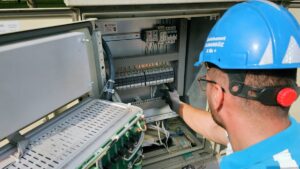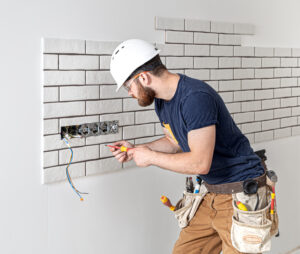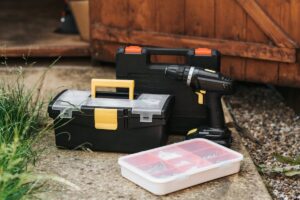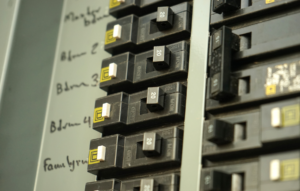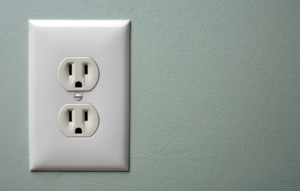Electrical overloads are a common cause of household and workplace fires, often resulting from improper use of power strips and extension cords. Understanding how to prevent electrical overloads is crucial for maintaining safety and efficiency in your electrical system. This comprehensive guide will explore the causes of electrical overloads, provide tips for safe usage, and offer practical solutions to prevent potential hazards.
Understanding Electrical Overloads
What Is an Electrical Overload?
An electrical overload occurs when too much current flows through a circuit, exceeding its capacity. This can cause the circuit to overheat, potentially leading to fires, damaged equipment, and even electrical shock. Common signs of an overload include tripped circuit breakers, flickering lights, buzzing outlets, and a burning smell.
Common Causes of Electrical Overloads
- Overuse of Power Strips and Extension Cords: Plugging too many devices into a single power strip or extension cord can exceed their load capacity.
- High-Wattage Appliances: Devices like space heaters, air conditioners, and microwaves draw significant power and can easily overload circuits.
- Outdated Electrical Systems: Older homes and buildings may have wiring that can’t handle modern electrical demands.
- Improper Wiring: Faulty or damaged wiring can contribute to overloads by not distributing electricity evenly.
Key Factors to Consider
- Load Capacity of Power Strips and Extension Cords
Each power strip and extension cord has a maximum load capacity, typically measured in amps or watts. It’s essential to ensure that the combined load of all connected devices does not exceed this limit.- Calculating Electrical Load: Add up the wattage of all devices you plan to connect. For example, if you have a computer (300W), a monitor (100W), and a printer (50W), the total load is 450W. Ensure the power strip or extension cord can handle this load.
- Quality and Ratings
- UL Certification: Look for power strips and extension cords with UL (Underwriters Laboratories) certification, indicating they meet safety standards.
- Energy Ratings: Higher energy ratings indicate better protection against surges and overloads.
- Safety Features
- Surge Protection: Essential for protecting sensitive electronics from voltage spikes.
- Circuit Breakers: Automatically shut off power in case of an overload, preventing potential fires.
- Ground Fault Circuit Interrupters (GFCIs): Crucial for use in areas prone to moisture, such as kitchens and bathrooms.
- Proper Usage and Placement
- Avoid Daisy Chaining: Connecting multiple power strips or extension cords together can easily lead to overloads.
- Regular Inspections: Check for frayed cords, exposed wires, and other damage that can compromise safety.
Tips for Preventing Electrical Overloads
- Distribute Electrical Loads Evenly
- Use Multiple Circuits: Spread high-wattage devices across different circuits to prevent a single circuit from becoming overloaded.
- Install Additional Outlets: In areas with high electrical demand, consider installing additional outlets to distribute the load more evenly.
- Use the Right Equipment
- Heavy-Duty Extension Cords: For high-wattage appliances, use heavy-duty extension cords with lower AWG (American Wire Gauge) ratings.
- Quality Power Strips: Invest in power strips with built-in surge protectors and circuit breakers.
- Regular Maintenance and Inspections
- Check for Wear and Tear: Regularly inspect cords and strips for signs of damage, such as fraying or exposed wires.
- Replace Damaged Equipment: Immediately replace any damaged or worn-out power strips and extension cords.
- Educate Users
- Inform Family and Employees: Ensure everyone in your home or workplace understands the importance of preventing overloads and how to use electrical equipment safely.
- Provide Clear Instructions: Label outlets and power strips with their maximum load capacities.
Practical Solutions for Preventing Overloads
- Upgrade Your Electrical System
- Modern Wiring: Older homes and buildings may need upgraded wiring to handle modern electrical demands.
- Additional Circuits: Installing extra circuits can help distribute electrical loads more evenly.
- Install Dedicated Circuits for High-Wattage Appliances
- Specific Circuits: Appliances like refrigerators, microwaves, and space heaters should have their dedicated circuits to avoid overloading general-use circuits.
- Use Smart Power Strips
- Energy Monitoring: Smart power strips can monitor and manage the energy consumption of connected devices, reducing the risk of overloads.
- Automatic Shutoff: Some smart strips can automatically shut off power to devices that are not in use, preventing unnecessary load on the circuit.
- Adopt Energy-Efficient Devices
- Energy Star Appliances: Choose Energy Star-rated appliances and electronics, which use less power and reduce the overall load on your electrical system.
- Implement Surge Protectors
- Whole-House Surge Protectors: Installing whole-house surge protectors at the main electrical panel can provide an additional layer of protection against overloads and power surges.
Safety Tips for Using Power Strips and Extension Cords
- Avoid Overloading: Always check the load capacity and avoid plugging too many high-wattage devices into a single strip or cord.
- Regular Inspections: Periodically inspect cords and strips for damage, fraying, or exposed wires. Replace them if any damage is found.
- Proper Placement: Keep cords and strips away from heat sources, water, and areas where they can be pinched or tripped over.
- Follow Manufacturer Instructions: Always adhere to the guidelines provided by the manufacturer regarding the use and limitations of the product.
- Unplug When Not in Use: Disconnect power strips and cords when not in use to reduce the risk of electrical fires.
Real-Life Scenarios and Solutions
- Home Office Setup
- Scenario: You have a computer, printer, lamp, and phone charger all plugged into a single power strip.
- Solution: Calculate the total wattage of all devices and ensure the power strip can handle the load. Consider using a second power strip or installing additional outlets to distribute the load.
- Kitchen Appliances
- Scenario: Your kitchen counter has a toaster, coffee maker, and microwave all connected to an extension cord.
- Solution: High-wattage appliances like microwaves should have their dedicated outlets. Use separate circuits for different appliances and avoid using extension cords for high-power devices.
- Holiday Decorations
- Scenario: During the holiday season, you use multiple extension cords and power strips for lights and decorations.
- Solution: Spread decorations across multiple outlets and circuits. Use heavy-duty extension cords for outdoor decorations and avoid daisy chaining multiple power strips.
- Workshop or Garage
- Scenario: Your workshop has power tools, a heater, and lights all connected to a single power strip.
- Solution: Use heavy-duty power strips and extension cords with a lower AWG rating. Install dedicated circuits for high-wattage tools and equipment.
Ensuring Electrical Safety with Power Strips and Extension Cords
Preventing electrical overloads when using power strips and extension cords is essential for maintaining a safe and efficient electrical system. By understanding the causes of overloads, choosing the right equipment, and following best practices, you can protect your home or workplace from potential hazards. Regular maintenance, user education, and thoughtful planning are key to ensuring electrical safety and preventing overloads.
With the right knowledge and tools, you can effectively manage your power needs and keep your electrical systems running smoothly. Remember to always prioritize safety and consult a professional electrician for any complex electrical issues or upgrades. By taking these precautions, you can enjoy the convenience of power strips and extension cords without compromising on safety.



